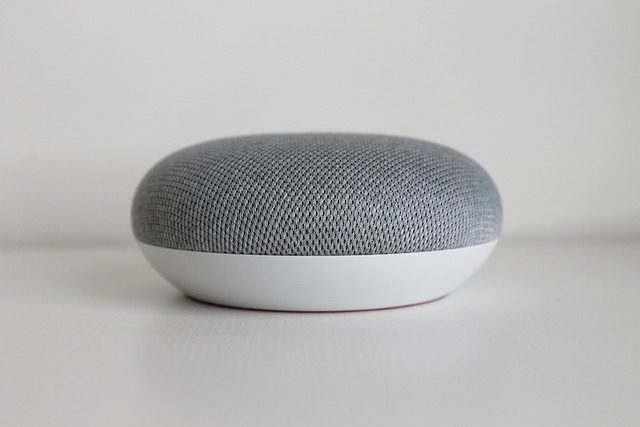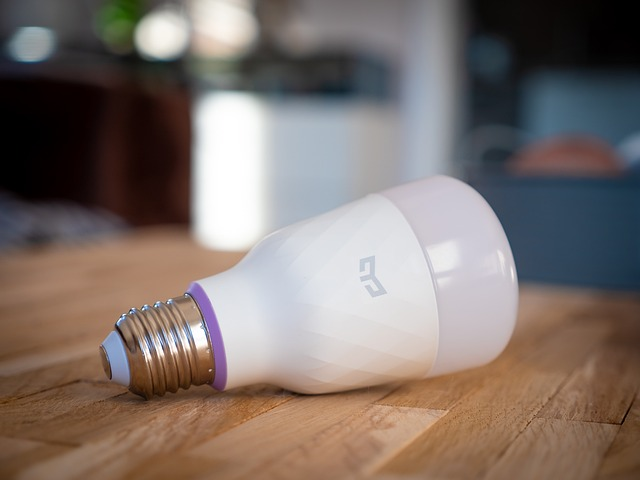Ever dreamed of a house that practically runs itself? Welcome to the world of home assistant platforms, specifically Home Assistant, a powerful, open-source home automation platform that puts you in control of your smart home! With its vast array of integrations, from lighting and climate control to security and entertainment, Home Assistant transforms your everyday living space into a seamless, automated environment. In this blog post, we’ll take a deep dive into the Home Assistant platform, exploring its configuration, integration, and potential for creating a truly connected home.
Table of Contents
Short Summary
Explore the Home Assistant Platform to automate your home setup
Easily integrate devices and entities for powerful automations, increased security, resource monitoring & energy savings
Create custom scenarios with voice commands or automation for lights, climate control & security
Understanding Home Assistant Platforms

Imagine a world where your home automation system can be tailored to your specific needs. That’s what Home Assistant offers, with its platform-based approach that allows you to access built-in integrations for a wide variety of devices and services, such as Philips Hue lights or Nest thermostats. These platforms provide a way to interact directly with these integrations by creating a file with the domain name of the integration.
The beauty of Home Assistant lies in its flexibility. You can choose from a plethora of integrations, each with its own set of core methods and properties. And if you need extra functionality, add-ons are at your disposal. Automation is also a breeze – set up scenarios based on specific triggers or conditions, and let Home Assistant do the rest. Just remember, integrations should never directly interface with devices; instead, they should interact with a third-party Python 3 library.
Setting Up Your Home Assistant on Raspberry Pi
For those new to Raspberry Pi, it’s a small, single-board computer developed by the Raspberry Pi Foundation that can easily turn a monitor, TV, or other peripheral device into a full-fledged computer.
Setting up Home Assistant on a Raspberry Pi is a straightforward process consisting of installing the operating system, configuring the initial settings, and accessing the user interface.
Installing the Operating System
To get started, you’ll need to flash Home Assistant OS (formerly HassOS) onto an SD card using a tool like Etcher. This operating system is specifically designed for Home Assistant on Raspberry Pi. Once the SD card is ready, you need to insert it into your Raspberry Pi and power it on to boot up with Home Assistant OS.
For a list and more detailed instructions, consult the Home Assistant documentation.
Initial Configuration
After booting up your Raspberry Pi with Home Assistant OS, you’ll need to configure it to work with your devices and services. Start by setting up Home Assistant on a dedicated system, creating the necessary folders and files, and configuring your name, username, and password.
To set up the necessary folders, create a configuration folder for storing your configuration files, a custom_components folder for any custom components, and a secret folder.yaml file for sensitive information like passwords and API keys.
Then, configure your name, username, and password in the Home Assistant configuration file by adding the two following lines: name: your name>, username: your username>, and password: your password>.
Accessing the User Interface
Once your Home Assistant is set up and configured, it’s time to access the user interface. Simply open a web browser on your device and head to http://homeassistant.local:8123.
You can also access the user interface on other devices, mobile devices, or virtual machines by replacing “homeassistant.local” with the IP address of one of the device running Home Assistant.
Integrating Devices and Entities

To fully harness the power of Home Assistant, you’ll want to integrate various devices and entities into your setup. Devices are physical objects like lights and thermostats, for example while entities are virtual components such as sensors, automations, and switches that provide information or control over the devices. Integrating devices and entities is a breeze, whether you prefer using the web interface or the command line interface.
By connecting devices and entities, you can create powerful automation scenarios, enhance security and monitoring, and save energy, time and resources. Imagine a motion sensor turning on a light or a temperature sensor activating a fan – the possibilities are endless.
Adding Devices
To add a device or integration to your Home Assistant platform, first, search for it on the Home Assistant website or documentation to find the configuration options. Once you have the relevant details, navigate to the configuration settings in Home Assistant and add the integration or device.
Managing Entities
Entities are the individual components of Home Assistant that you can control and monitor, such as lights, switches, and sensors. To add metadata as custom attributes to an entity, you can edit the customize.yaml file or use the Configuration > Customizations option.
If you need to change the name of an entity, simply click on the edit icon beside it. This way, you can easily manage and customize your entities to suit your needs and preferences.
Creating Groups and Scenes
Creating groups and scenes in Home Assistant is as easy as clicking on “Add Scene” or “Add Group” in the user interface. Give your group or scene a name, include any devices or entities you’d like, and save it.
This allows you to create more advanced automation scenarios and truly customize your Home Assistant experience.
Popular Home Assistant Integrations
Integrations are the key to unlocking the full potential of Home Assistant, as they connect third-party applications and services to the platform, enhancing its core functionality. Among the most popular integrations are Google Assistant, Amazon Alexa, IFTTT, HomeKit, and Philips Hue.
By using these popular integrations, you can automate tasks, control devices remotely, and create custom scenes and groups for a truly connected home experience. The world of Home Assistant integrations available is vast, and there’s always something new to explore and enhance your smart home experience.
Learn more, visit Top 10 Home Assistant Integrations.
Building Automation with Home Assistant

Home Assistant’s automation capabilities allow you to create a wide range of different scenarios, from light control and climate management to security monitoring.
In this section, we’ll delve into various automation examples and how to set them up using Home Assistant as an example.
Light Control
Automating lighting in your home with Home Assistant is a breeze. First, you’ll need to install and configure the integration for your specific light brand or protocol. Once the lights are discovered and added to Home Assistant, you can control them using the user interface or voice commands provided through Amazon Alexa or Google Assistant.
You can also create automations for your lights, such as turning them on when motion is detected, dimming them when it gets dark, or turning them off when you leave the house. These light automations can help save energy and enhance the ambience of your home.
Climate Control
Climate control automation in Home Assistant can improve comfort and save energy. To get started, configure the climate integration to control specific devices like A/C systems and humidifiers. Once the integration is ready, customize the climate settings, including temperature, humidity levels, and fan speed.
Home Assistant enables you to create automations for climate control based on certain triggers or conditions. For instance, you could set the climate settings to “home” mode when you wake up in the morning or at a specific time. You can also utilize custom components or third-party integrations for even more control over your climate settings.
Security and Monitoring
Setting up security and monitoring features in Home Assistant, like cameras, motion sensors, and alarms, can provide peace of mind and protect your home. To create a manual alarm control panel, configure it in the configuration.yaml file, add it to the user interface, and customize it according to your preferences.
Incorporate various sensors, like motion detectors, door/window sensors, and smoke detectors, used to detect and monitor security breaches. Home Assistant also offers different armed states, such as Home, Away, Night, Vacation, and Custom Bypass, for added security customization.
To ensure the Home Assistant platform remains safe, use strong passwords, enable two-factor authentication, and utilize secure protocols like HTTPS.
Troubleshooting Common Issues
While Home Assistant is a powerful and versatile platform, it’s not uncommon to encounter issues such as invalid configuration files, startup failures, or installation problems. Thankfully, there are solutions to these common issues. Troubleshooting configuration files, restarting the Home Assistant service, and reinstalling Home Assistant can help resolve most issues.
The Home Assistant community is also a great community resource for support and assistance in troubleshooting any problems you may encounter.
Summary
In conclusion, Home Assistant is a powerful, open-source home automation platform that puts you in control of your smart home. From configuring the platform on a Raspberry Pi to integrating devices and entities, creating automations, and utilizing popular integrations, Home Assistant offers a new world of possibilities for a truly connected home experience.
We hope this blog post has provided you with a comprehensive understanding of Home Assistant and inspired you to want to explore its limitless potential for home automation. Transform your living space into the smart home of your dreams, and enjoy the convenience and comfort it brings to your everyday life.
Frequently Asked Questions
What is a Home Assistant platform?
Home Assistant is an open-source home automation platform that provides users with a single interface to control and automate a wide range of smart home devices, such as lights, thermostats, cameras, and sensors. It is free and secure, focusing on local control and privacy.
Home Assistant is designed to be easy to use and customize, allowing users to create their own automations and scenes. It also integrates with a variety of third-party services and platforms, such as Amazon Alexa, Google Home, and IFTTT, to provide a comprehensive home automation experience.
Does Home Assistant need a PC?
No, Home Assistant does not necessarily need a PC to run. It is compatible with various hardware, including the Raspberry Pi and other systems.
Does Home Assistant run locally?
Yes, Home Assistant runs locally and communicates with your devices without storing data in the cloud. It can be run on a Raspberry Pi or a local server and is powered by a global community of tinkerers.
Can I run Home Assistant on a Raspberry Pi?
Yes, you can run Home Assistant on a Raspberry Pi by installing the Home Assistant OS and configuring the settings.
This is a great way to get started with Home Assistant and a way to have a fully functioning system up and running quickly.
How do I integrate devices and entities into Home Assistant?
Integrating devices and entities into Home Assistant is easy – you can do it via the web or command line interface, letting you set up automation and more secure monitoring.









